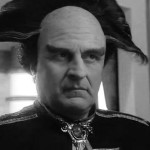- 25 Mar 2009 12:28
#1847047

Ludwig from L'Orreal and Drago from FSB say once hy to your dad (Halil Zaljevic Facebook), An Bosnian Mercenary
What is known about the ottoman Artellery of the 1300-1450
I read that the Ottomans were able with their Artellery to brake the Walls of Konstantinopel, that their guns decided the Kosovo-Battle...
Any Infos about this Artellery?
I read that the Ottomans were able with their Artellery to brake the Walls of Konstantinopel, that their guns decided the Kosovo-Battle...
Any Infos about this Artellery?

Ludwig from L'Orreal and Drago from FSB say once hy to your dad (Halil Zaljevic Facebook), An Bosnian Mercenary






















 - By JohnRawls
- By JohnRawls